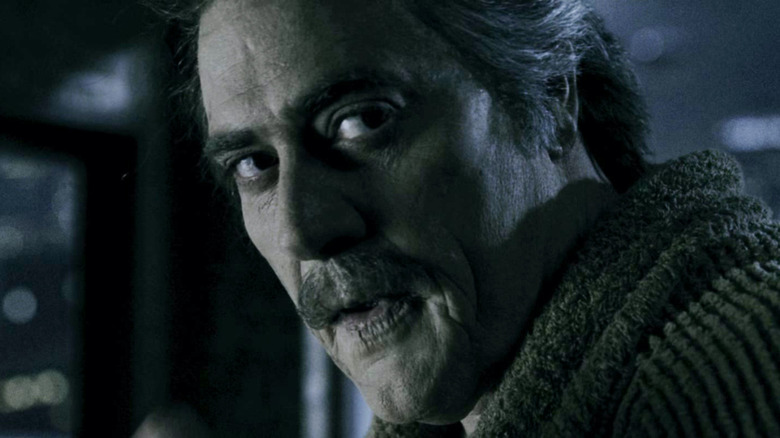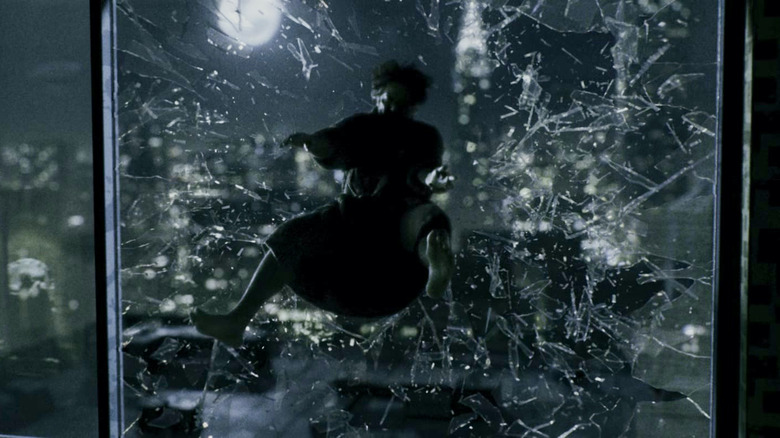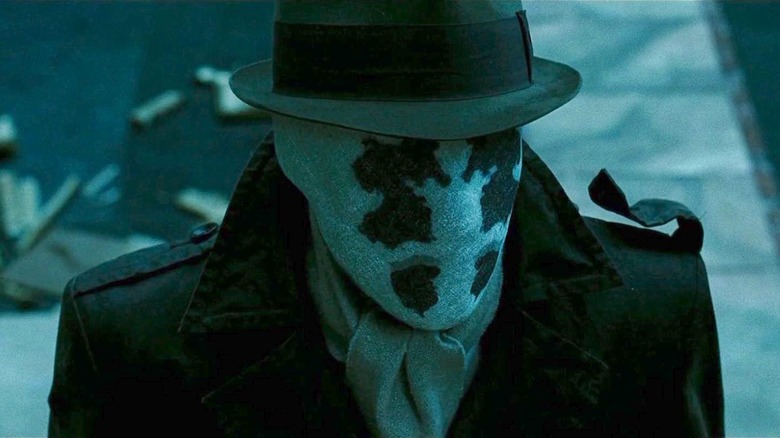Paul Greengrass' Scrapped Watchmen Movie Opened With A Twisted Take On Superman
15 years after its theatrical release, Zack Snyder's "Watchmen" occupies a curious spot in the history of comic book superhero cinema. While bleak blockbusters like "Dune: Part Two" and "Oppenheimer" might be all the rage in 2024, that wasn't the case when Snyder's film arrived in 2009. The success of "Iron Man" a year earlier signaled a shift in audiences' tastes. The brooding, auteur-led offerings of the 2000s (like "Hulk" and "The Dark Knight") would soon after give way to the studio-mandated crowd-pleasing spectacles of the Marvel Cinematic Universe. Snyder's relentlessly downbeat and violent interpretation of writer Alan Moore and artist Dave Gibbons' equally grim milestone graphic novel suddenly felt wildly out of tempo with the genre, as did his subsequent vision for the now-kaput DC Extended Universe.
Patrick Wilson, who starred in the film as the tech-whiz Daniel Dreiberg/Nite Owl II, has argued that Snyder's "Watchmen" set the stage for the MCU and the greater superhero genre's movement toward a lighter, more escapist bent, which is a valid point. At the same time, that does little to negate criticisms that Snyder's adaptation was only superficially faithful to its source material, recreating entire panels and most of the original comics' plot (save for the ending) yet overlooking the actual point of the story — to satirize and deconstruct the genre's tropes by grounding them in real-world logic. The result is that Snyder's typically music video-slick, slow-mo heavy filmmaking clashes directly with what the rest of "Watchmen" is trying to do.
But what if a filmmaker who specializes in making thought-provoking docu-thrillers and infusing action movies with a heightened sense of realism had gotten their hands on "Watchmen" instead? Well, that's almost what happened when Paul Greengrass was attached to direct the film.
You will believe a man can fall
The production history of "Watchmen" is long and convoluted, with several directors coming and going over the course of its development (including, perhaps most infamously, Terry Gilliam). Greengrass himself had become involved with the project by 2005, at which point he had only just bounced up on Hollywood's radar thanks to "The Bourne Supremacy" the year before. Ultimately things didn't work out, although Greengrass spent enough time working on the script with co-writer David Hayter to give us an idea of what he might have done with the property.
Hayter, speaking on the "Script Apart" podcast, described the opening of Greengrass' iteration as an example of just how much it differed from Snyder's "Watchmen." Like both the original comic book and Snyder's film, it would have opened with the unscrupulous vigilante Edward Blake/The Comedian (Jeffrey Dean Morgan) being chucked out of his apartment's window by a mysterious attacker. Except, as Hayter explained, Greengrass wanted to deliberately evoke DC's Big Blue Boy Scout:
"The two versions were very different. You could see — I loved Paul's idea that he said, you know, 'When we open on Eddie Blake, I wanna see him, he's like Superman, you know, he's flying and his hair is going and he's handsome and everything, and then you pull back and you realize BOOM, he's plummeting off of this building.' So, you know, you sort of subvert everyone's expectations from the first image."
It also sounds like Greengrass would have skipped over the speed-ramped fight between Blake and his assailant that caused him to fall to his death in Snyder's film, which, again, reads as a better choice. Highlighting how cool your larger-than-life characters look when they come to blows kind of defeats the whole purpose of bringing them down to earth.
Rorschach's mask really was his face
Where Snyder tends to combine realistic textures with formalist action (especially in his comic book adaptations), Greengrass is all about verisimilitude through and through, right down to the you-are-there journalistic camerawork and natural lighting. It's what makes the Moscow car chase in "The Bourne Supremacy" one of the best action sequences ever and it's something he intended to carry over with him into the world of big-budget superhero fare. Hayter cited the filmmaker's ideas for the nihilistic crime-fighter Rorschach's (Jackie Earle Haley) appearance as another example of this:
"And he also, he found a picture of a homeless guy, you know it's like a book of artistic photographs of the homeless, and there was this one guy whose face was so caked in dirt that it was like a mask, you couldn't see his face anymore, you just see his eyes sort of peering out of this caked black dirt and his hair is all matted and everything, and he said, 'That's how I want Rorschach to look without his mask.' So that Rorschach really never took off his mask, you know?"
Hayter summed up Greengrass' approach as "kind of a cool documentarian's view of how you set up that world [...] it would've been very, very different, but it would've been very cool as well. I would've loved to see Paul's version." I agree, although part of me suspects that Greengrass' "Watchmen" was doomed no matter what. Auteur superhero movies were already going out of style by the time he boarded the project and there's a real chance the film would've remained stuck in early development, had "300" not convinced Warner Bros. that Snyder could work his magic on another mature, button-pushing comic book flick.
Besides, thanks to his "Watchmen" falling apart, Greengrass made the second-best "Bourne" movie instead. Fair trade, I say.


